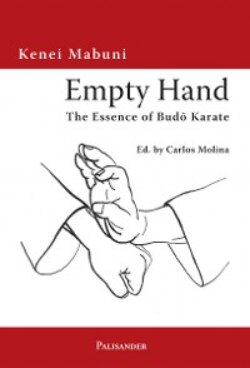Читать книгу Empty Hand - Kenei Mabuni - Страница 27
The Emergence of the Naha-te
ОглавлениеThe Naha-te is said to originate from a village called Kume41. It was founded by Chinese who came to the Ryūkyū islands from the Fukien province in 1393. This was the time of the Ming empire. Many of their offspring were active in the China trade. From their home province they had brought along kempō knowledge that they obviously passed on to the Kume nobility. What they taught was probably not pure Chinese kempō but a style rather influenced by the Shuri-te and adapted to the conditions of the Ryūkyū islands.
Aragaki Seishō (1840-1920) from Kume – he was later given the name “Aragaki the Cat” – is said to have been one of the greatest martial arts masters. My father, Funakoshi Gichin and Miyagi Chōjun were among his disciples. He not only practiced karate but also bō techniques.
Higaonna Kanryō (1853-1916), too, learned karate from master Aragaki. Higaonna came from a Naha-based family of firewood traders. He learned kempō, which was normally taught only to the Kume nobility, from Aragaki. Higaonna seemed to have been blessed with a special fighting talent. At the age of 15 he traveled to the Fukien province, studied the local kempō and after his return created the Naha-te. That is why the Naha-te is younger than the Shuri-te and the Chinese influence is stronger. My father said about master Higaonna and his karate: “Master Higaonna had been to China and had studied the Fukien kempō. His lessons were different from the ones we are used to today.”
Photo 12
Photo 13
Photos 12 and 13: The hanging or laying hand (kake-te). Photo 12 shows the technique kake-te as practiced in the Shuri-te, and photo 13 represents the same technique as practiced in the Naha-te. See next pages.
Typical for the Shuri-te is distance fighting presupposing an opponent armed with a sword. Naha-te, however, is infighting, based on southern Chinese kempō. There are no thrusts and kicks which are typical elements of distance fighting. Of course Naha-te, too, is not pure kempō. It is influenced by the Shuri-te and adapted to the Okinawan conditions. However, techniques that are called in Chinese kempō “explosive energy” (hakkei) or “power of the moment” (sunkei) are particular for this style. In the Naha-te, these techniques were at first practiced by exercising the “three phases kata” (Sanchin) and “turning-the-palms kata” (Tenshō).
A particularity of the Naha-te is also a breathing technique used to contract all muscles of the body. There is no such exercise in the Shuri-te. In the beginning it is practiced by inhaling and exhaling slowly, and at the same time slowly pulling the fist back to the hip (hikite) and thrusting it forward. Of course in a normal situation blocking and thrusting are carried out much faster.
The above-mentioned expression of the “power of the moment” (sunkei), i.e. “explosive power”, describes the harmony of breathing and action in order to accumulate the inner energies and to contract the whole muscular system of the body and then releasing it “explosively”. Normally this is called kime.
Photo 14
Photo 14: Analysis of the kake te in the Shuri-te: The hand blocks and grabs.
In present-day kata the differences between Shuri-te and Naha-te are hardly recognizable. However, the original styles differ significantly from each other. But there are not only differences with regard to the principles of kicking and thrusting but also to single techniques. The blocking technique “laying or hanging hand” (kake-te)may serve as an example (photos 12 to 15). This technique is used in Shuri-te as well as in Naha-te. But it is used in different ways. Because Shuri-te is distance fighting, the thrusting arm of the opponent is caught in a distance. The laying or hanging of the hand is carried out with a grabbing and pulling movement (photos 12 and 14). In the infight-focused Naha-te, the distance is reduced and the laying of the hand is carried out with the palm being raised deviating the attack with the back of the hand (photos 13 and 15).
Photo 15
Photo 15: Analysis of the kake te in the Naha-te: The hand blocks and deviates the attack.
